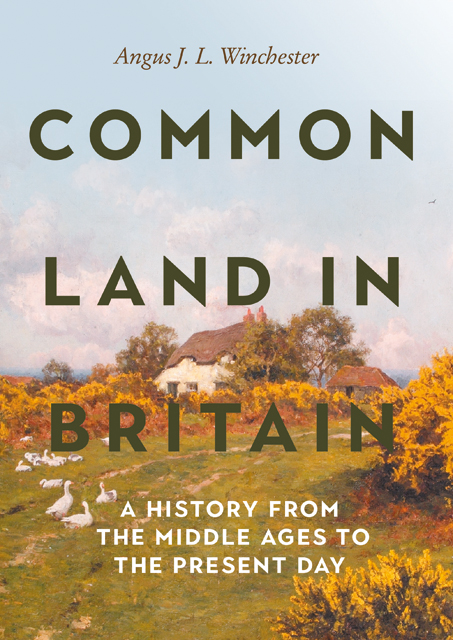Chapter 2 - Custom and Law: The Genesis of Common Land
Published online by Cambridge University Press: 20 December 2022
Summary
Shared use lay at the heart of common land and required mutual understandings between users and an agreed framework to structure the exploitation of resources. The law relating to commons developed from a bedrock of custom and tradition, which had deep roots and common characteristics but was essentially local in its particularities. No single set of legal concepts has underpinned all commons in Britain. Common land, as it is generally conceived, was in origin an English construct without a direct equivalent in the different legal traditions of Scotland or medieval Wales.
In teasing out the complexities of custom and law, this chapter begins by considering evidence for the organisation of common land in the pre-feudal societies of early medieval Britain. The bulk of the chapter then outlines the legal framework of property rights over common land since the medieval period – who owned common land, the nature of common rights and how these were determined – identifying recurrent themes but also considering patterns of rights and use which diverged from the legal norms. A final section examines the manifestations of legal frameworks on the ground, in territorial boundaries separating the common land belonging to one community from that of its neighbours.
PRE-FEUDAL COMMONS: EXTENSIVE LORDSHIP
Taking a very long chronological view, it can be postulated that settlements existed at an early date as islands in an ocean of unappropriated waste, the resources of which could be drawn upon freely. Population growth and expanding numbers of settlements would place increasing demands on the resources of untamed land, prompting claims to exclusive use by individual settlements or groups. Boundaries would evolve through custom and practice, defining the limits of a group’s rights. By the early medieval period, patterns of customary use had already drawn wastes into the institutional structures of society, converting wilderness into common land ‘belonging to’ communities.
Folk memories of the process were recalled on the expansive wetlands of eastern England in the thirteenth century. Fen land in the Pinchbeck area of Lincolnshire had been ‘common to all of the countryside (patria) desiring to use it’ until the ‘first habitation of Holland’, when it was divided between vills. Further south, around Sawtry, competing claims were backed by stories about the division of the fens in the time of Thurkil the Dane or in the time of Cnut. Some fens remained undivided, shared by adjacent communities in the twelfth and thirteenth centuries.
- Type
- Chapter
- Information
- Common Land in BritainA History from the Middle Ages to the Present Day, pp. 21 - 50Publisher: Boydell & BrewerPrint publication year: 2022



